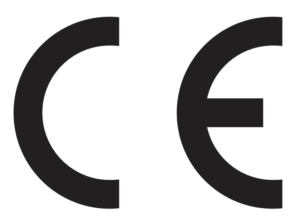This is part 1 of a two-part blog series covering our whitepaper, “The New EU In Vitro Diagnostic Regulation: What’s Changing and What You Need to Know” written by Vincent Balgos, Medial Solution Manager at Jama Software. In this paper, Vincent discusses the In Vitro Diagnostic Regulation (IVDR), developed by the EU Commission (CE), which was created to replace the previous In Vitro Diagnostic Directive (IVDD).
We will share the link to part 2 when it publishes. In the meantime, you can download the eBook HERE.
The New EU In Vitro Diagnostic Regulation (IVDR): What’s Changing and What You Need to Know
Learn more about how IVDR differs from IVDD, key takeaways from the new regulation, and guidance for how to adapt.
Disclaimer: The IVDR regulation is broad and requires focused review and interpretation by each organization — so by no means is this paper intended to be all-exclusive, as it will only discuss select topics.
Jama Software® is not an accredited regulatory body, so these are general discussions and insights from our experience working with many IVD customers, general research, and some internal subject matter expertise. It is suggested to work with a certified Regulatory Affairs consultant (a new IVDR regulation) to obtain formal recommendations for your organization.
If you’re looking for guidance on who to work with when it comes to regulatory compliance, TÜV SÜD has provided certification and testing services for manufacturers and suppliers of medical devices and in vitro diagnostics for over 30 years.
They combine expert medical product testing knowledge with a global network of internationally accredited laboratories and facilities, providing you with a one-stop solution. In fact, Jama Connect® is certified through TÜV SÜD as a software tool for development of medical devices according to IEC 62304.
Introduction
In May of 2022 a paradigm shift emerged in how In-Vitro Diagnostics (IVD’s) will be developed, managed, and regulated in the European Union (EU). The EU Commission (CE) has developed new regulations named the In Vitro Diagnostic Regulation (IVDR) to replace the previous In Vitro Diagnostic Directive (IVDD). The main goal of the IVDR is to improve upon the quality, safety, and reliability of IVD’s within the European market. This will change the current status quo as IVDR has been predicted to have a significant impact in medical device organizations with IVD sale and business operations.
In this whitepaper, we will provide an overview of the new regulation, discuss some specific topics, and offer considerations for organizations as they adapt to this new paradigm.
Related: The Impact of ISO 26262 on Automotive Development
Overview of the IVDR and The Significant Impact on EU

Figure 1. CE Mark
Prior to the IVDR, the In-Vitro Diagnostics Directive (IVDD) was the governing regulation for devices placed in Europe. Officially adopted in 1997, the IVDD established the regulatory requirements for CE Marking approval for in vitro diagnostics¹. In order to sell and market IVD’s in the European Union, manufacturers need to show compliance with the essential requirements prior to marking the product with the CE label. The CE mark allows for legal distribution
of the IVD within the European Economic Area (EEA)². The CE mark indicates conformity across many different types of products and is based on compliance with specific European regulations based on the product type. See example marking to the left.
For medical devices and IVDs, compliance to the EU Medical Device Directive (MDD) and the EU IVDD was required to obtain CE marking, respectively.
Related: Medical Device: Reduce Project Risk in the Product Development Process
IVDD Overview:
- IVDD was established in 1997 by the EU for trade within the EEA with 27 EU members plus Iceland, Liechtenstein, and Norway.
- IVDD applies to all Reagents, Calibrators, Kit, Instrument, Equipment, Systems used for in vitro diagnostics purposes in the EEA, regardless of origin of design and manufacturing.
- IVDD is 43 pages providing general requirements. You can read the full document here.
- Essential Requirements included requirements for design, production, labeling, and the instructions for use (IFU). Some specific requirements included the diagnostic’s analytical sensitivity and specificity, accuracy, repeatability, and reproducibility.
- There are four general categories that are based on level of risk to public health and/or patient.
- Annex II List A – Highest risk which require notified body review including HxV’s such as HIV, HBV, HCV
- Annex II List B – Moderate Risk including IVD’s such as HLA, Glucose monitoring
- Self-Test – Examples include pregnancy home tests, and cholesterol
- General – No notified body required as OEM can ‘self-declare’ conformity
Key factors such as the device classification, risk level to patients/public, etc. would determine the manufacturer’s level of approach to developing, manufacturing, and documenting the IVD. A common industry practice for launching an IVD to the global market was that organizations would first launch their products in the EU, and then to broader markets. Due to less rigidity of the IVDD when compared to other countries, it was easier, faster, and more economical for companies to launch there first. The involvement of an external notified body was also less rigid, so many organizations tended to follow the least resistant pathway to market, with many following the ‘self-declaration’/ self-certification pathway. Learnings from the EU launch (e.g., clinical studies) could then be leveraged when then submitting to the more rigid regulatory pathways such as the U.S. Food and Drug Administration (FDA).
This common approach enabled organizations to get new products to the market faster through the regulatory pathway. In the author’s experience, this approach was practiced on many of the IVD’s developed throughout their career in multiple diagnostic applications. The general regulatory roadmap was to have initial launches in EU markets and then proceed with FDA pathway. This provided additional time to work on FDA submission activities since the level of rigidity and documentation was expected to be much higher. However, with the IVDR enforcement now in full effect, it is expected to have a tectonic shift in how manufacturers develop IVDs.
Related: Webinar: Understanding Integrated Risk Management for Medical Device
Compelling Events for Change
As seen with many types of general regulations, changes are commonly in response to mass incidents, generally with negative impact resulting in patient injury and sometimes even death. The US FDA has seen their regulations shift in reaction to mass incidents including the Therac-25 (radiation therapy) and Dalkon Shield (intrauterine device). The accidents led to significant legislative changes to prevent recurrences and improve industry practices to ensure ‘safe and effective’ products.
The emergence of IVDR follows a similar path, where there were European several high-profile events that led to the regulation update. The most notable was the Poly Implant
Prosthesis (PIP) breast implant scandal (based in France) that impacted many patients with high incidents of ruptured implants with unapproved industrial silicone filling. You can read more about the incident here, and the subsequent
clinical recommendations here.
This event led to significant updates to the medical device space with the culmination of the EU Medical Device Regulation published in 2017. Following the MDR initiative, the incumbent IVDD was also overhauled into the new IVDR paradigm which entered into force on May 26, 2017
Stay tuned for Part 2 of this blog series. To read the whitepaper in its entirety, download it HERE.
- Shaping the Future of MedTech: Insights from Industry Leaders on AI, Innovation, and Regulatory Challenges - December 17, 2024
- [Webinar Recap] Key Systems Engineering Skills: Critical Thinking and Problem Framing - November 21, 2024
- Jama Connect® Features in Five: Medical Device & Life Sciences Solution 2.0 – Part 2 - July 28, 2023
